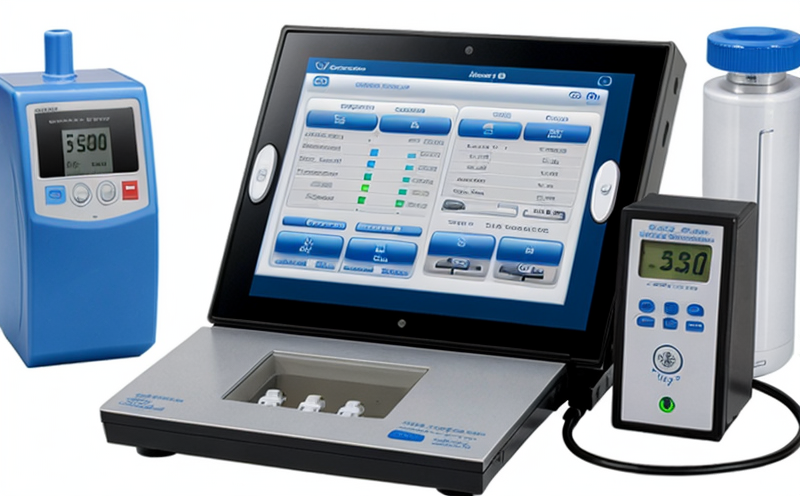Packaging Integrity Testing of Infusion Device Kits
The integrity of packaging is critical in ensuring the safety, efficacy, and sterility of medical devices such as infusion pumps and drug delivery systems. Packaging integrity testing plays a pivotal role in verifying that the packaging materials and methods are adequate to protect the contents from contamination, physical damage, and environmental factors during storage and transport.
Infusion device kits, specifically, require stringent testing due to their intimate relationship with patient safety. These devices often involve direct administration of medications or fluids into patients' vascular systems, making any breach in packaging potentially life-threatening. Ensuring that the packaging can withstand various simulated real-world conditions is essential for maintaining product integrity and regulatory compliance.
Testing methodologies typically include pressure decay testing (PDT), helium leak detection (HLTD), and vacuum testing to assess the leakage rates of different packaging materials under controlled environmental conditions. The aim is to identify any potential flaws that could compromise the sterility or functionality of the device within the kit.
The specimen preparation process involves selecting representative samples from various batches of infusion device kits, ensuring they reflect the entire production run's quality. This includes testing a range of packaging types and configurations used in different stages of the manufacturing process.
For accurate testing, appropriate instrumentation is crucial. Instruments like helium leak detectors or pressure decay testers are calibrated to specific standards (ISO 11607 for medical devices) ensuring reliable data collection. The results provide insights into whether the packaging meets regulatory requirements and industry best practices.
The importance of this service cannot be overstated, as it directly impacts patient safety and compliance with international standards. Regulatory bodies like the FDA and EMA have stringent guidelines on the testing and verification of medical device packaging to ensure consistent quality across all stages of product lifecycle management.
| Test Method | Description | Applicability |
|---|---|---|
| Pressure Decay Testing (PDT) | Measures the rate at which pressure drops in a sealed container, indicating leaks. | Suitable for packaging with a volume greater than 100 mL. |
| Helium Leak Detection (HLTD) | Detects minute helium leaks through sensitive mass spectrometers. | Best used for thin films or foil materials. |
| Vacuum Testing | Assesses the ability of packaging to withstand vacuum conditions without failure. | Effective for rigid packaging structures like bottles and blisters. |
The testing process is designed to replicate real-world scenarios, ensuring that any potential issues are identified before the product reaches the market. This proactive approach not only enhances patient safety but also strengthens brand reputation and regulatory compliance.
Quality managers and compliance officers rely on this service to ensure that their products meet stringent quality control standards. R&D engineers benefit from insights into material performance, while procurement teams can assess supplier capabilities accurately. By investing in comprehensive packaging integrity testing, organizations demonstrate a commitment to excellence and patient safety.
Benefits
- Enhanced Patient Safety: Ensures that the packaging protects the device from contamination or damage during transport and storage.
- Regulatory Compliance: Meets international standards such as ISO 11607, ensuring compliance with regulatory requirements.
- Improved Product Quality: Identifies any defects in the packaging that could affect the performance of the device.
- Risk Management: Minimizes the risk of recalls and product failures by identifying potential issues early.
- Enhanced Brand Reputation: Demonstrates a commitment to excellence and patient safety, enhancing brand reputation.
- Cost Efficiency: Prevents costly post-market recalls and associated legal liabilities.
Packaging integrity testing is an indispensable part of the product development lifecycle. By incorporating this service early in the process, manufacturers can ensure that their products meet all necessary standards and requirements, thereby reducing risks and enhancing overall quality.
International Acceptance and Recognition
Packaging integrity testing for infusion device kits is widely accepted and recognized across various international jurisdictions. Regulatory bodies such as the U.S. Food and Drug Administration (FDA), European Medicines Agency (EMA), and International Organization for Standardization (ISO) have established guidelines that emphasize the importance of this service.
The FDA, through its regulation 21 CFR Part 820, requires manufacturers to ensure that packaging materials and methods are adequate to protect medical devices from contamination. The EMA follows a similar approach in its guidelines, emphasizing the need for robust testing methodologies to verify packaging integrity.
ISO 11607 provides specific standards for packaging integrity testing of medical devices, which has been adopted by various countries worldwide. This standard ensures consistency and reliability across different regions, facilitating international trade and recognition.
The widespread acceptance of this service underscores its critical role in ensuring product quality and safety. By adhering to these internationally recognized standards, manufacturers can ensure that their products meet the highest global benchmarks.
Use Cases and Application Examples
- Infusion Pump Packaging: Ensuring that the packaging prevents contamination of the pump's internal components, especially after repeated handling during transport.
- Drug Delivery Kits: Verifying that the packaging maintains sterility throughout storage, transit, and use, especially for single-use devices.
- Sterile Storage Conditions: Assessing how well the packaging holds up under simulated conditions of high humidity or temperature fluctuations during storage.
- Transportation Challenges: Simulating harsh environmental conditions such as cold storage or extreme heat to ensure that the packaging remains intact.
The following table highlights specific use cases and application examples for packaging integrity testing in infusion device kits:
| Use Case | Description |
|---|---|
| Sterility Maintenance | Ensures that the packaging remains sterile during transportation and storage. |
| Leakage Detection | Identifies any potential leaks in the packaging that could compromise sterility or functionality. |
| Physical Integrity | Verifies that the packaging can withstand various physical stresses encountered during transport and storage. |
By addressing these use cases, manufacturers can ensure that their products meet all necessary standards and requirements. This proactive approach not only enhances product quality but also minimizes risks associated with potential failures or recalls.





